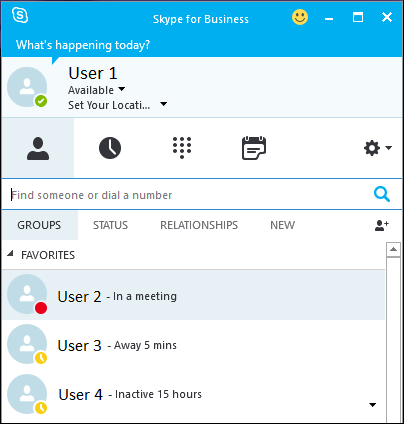

He can send and receive messages just fine, and perform any other operation just like a regular user. At that point, the user can access OWA directly: You will then notice that the recipient type will change from GuestMailUser to UserMailbox and the corresponding object will move from the Contacts tab in the EAC to the Mailboxes one. Set-MsolUserLicense -UserPrincipalName -AddLicenses michev:ENTERPRISEPACKĪfter assigning the license, give it some time for the provisioning process to trigger. Set-MsolUser -UserPrincipalName -UsageLocation US Still, it’s an interesting fact that you can trigger the provisioning process: Get-AzureADUser -SearchString satya | Set-AzureADUser -UserType Member You will need to “convert” the object to a regular user first, so technically I lied, and this will not be a considered a true guest user anymore. To do this, you will need to assign the corresponding Exchange Online license, and this in turn has a requirement on the user object. Yes, you got it right, you can have a mailbox provisioned for Guest users now. Similarly, you can now provision such users for services such as Exchange Online. This is no longer the case, as shown below: Technically, assigning a role was possible previously as well, however none of the admin portals actually respected this and the corresponding users were not able to access the portals or perform any admin actions via PowerShell. Another important new feature (or bug) is the fact that such users can now have admin roles assigned.

#SKYPE FOR BUSINESS ADD CONTACT ONMICROSOFT SHOW UP PASSWORD#
Once the password is known, you can simply navigate to the Office 365 login page, enter this long UPN and the password, and login to the portal. Resetting/generating a new password can be done with the familiar admin tools, for example via this PowerShell cmdlet: Set-MsolUserPassword -UserPrincipalName -NewPassword XXX -ForceChangePassword $false To make this work however, you need to reset the password for the associated user account, as no password is ever displayed (or used) as part of the Guest invitation/redeem workflow. I have no idea whether this is now the intended behavior or is some sort of a bug, but such users can now access the Office 365 portal and apps directly.

Thing have now changes it seems, probably in relation to the recent announcement for support for Google federation. There is one caveat however, Guest users cannot login directly to your tenant and thus have to access files or applications shared with them via a link or invitation. The users themselves login using their regular username and password against the “home” Identity provider (be it another Office 365 tenant or Google, etc), instead of this “constructed” UPN. In the examples above, there are users from other Office 365 tenants, users with MicrosoftIDs, users with GoogleIDs, but their accounts all look the same: username, followed by underscore and the domain part, followed by the “#EXT#” string, the sign and then the tenant’s domain.

Marian Marian Vasil Michev Tony.Redmond False Here are some examples on that from my tenant: UserPrincipalName DisplayName isLicensed The access mechanism for Guest users is somewhat similar to “regular” users one, with an actual Azure AD user object being provisioned, albeit with a strange-looking UPN. Guest users have been around for a while now in Azure AD/Office 365, and are the cornerstone of collaboration for workloads such as Microosft Teams or SharePoint Online.


 0 kommentar(er)
0 kommentar(er)
